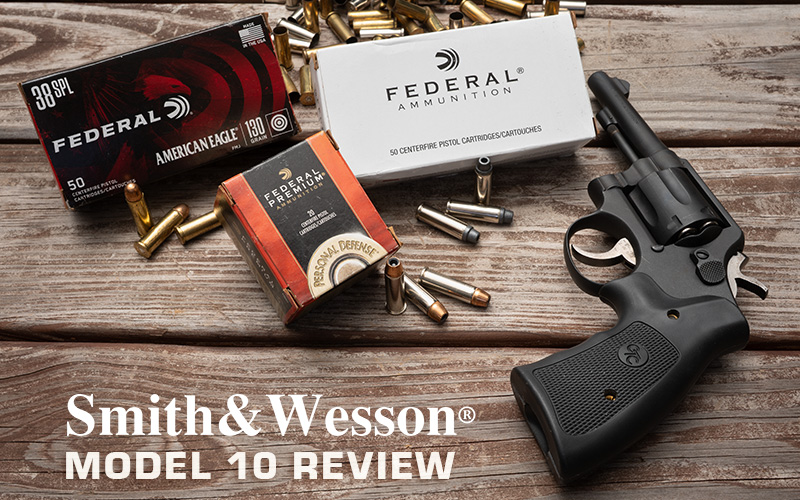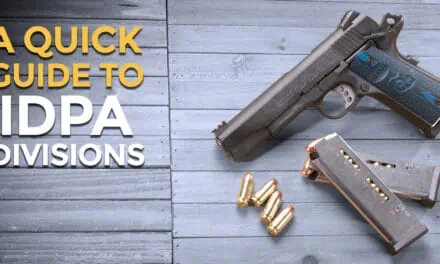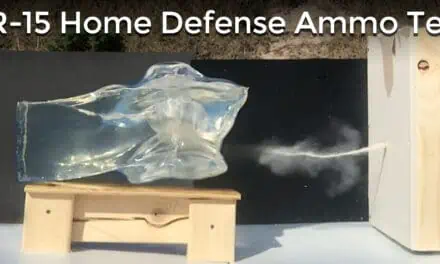The Smith & Wesson Model 10 originated as a .38 Hand Ejector 1899 model, the first firearm ever chambered for .38 Special.
While Colt beat S&W to solid frame swing-out cylinder double action design by a decade, the M1899 was designed for a far more capable cartridge. It featured a solid frame but was as quick to reload as a top break design. Its 4-inch barrel hit the sweet spot for accuracy, powder burn efficiency, and portability. High quality of manufacturing combined with good design made for accurate guns with impressive longevity. The revolver’s shrouded ejection rod and trigger mechanism that didn’t require frequent maintenance added to the reasons why this revolver started the S&W Military & Police line. Over the next century and a quarter, over 6 million Model 10 revolvers were made, and a substantial portion of them remains in daily use. In car terms, S&W10 became the “Honda Accord gun” of the 20th century.
The Model 10’s History
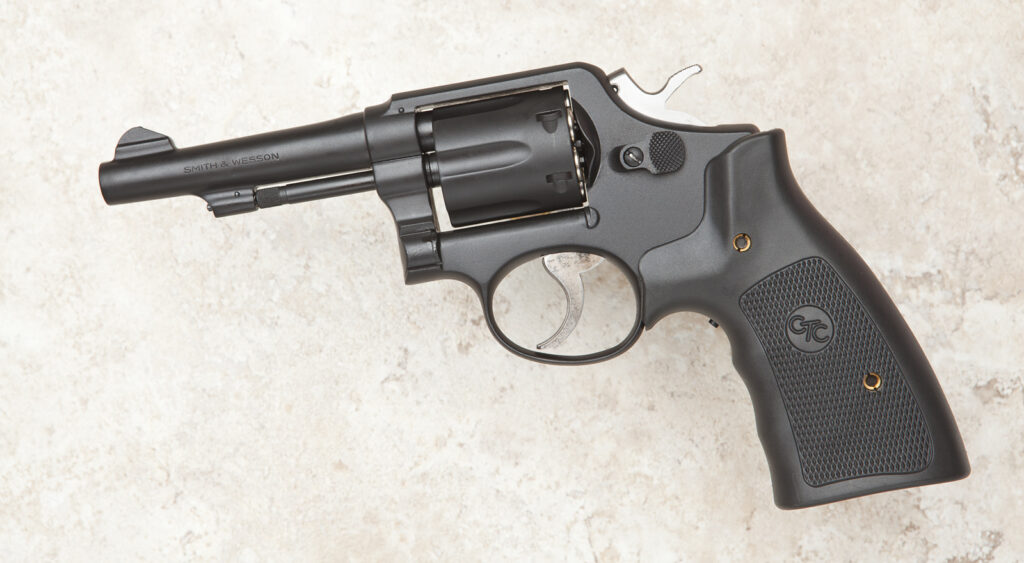
The revolver went through many revisions over its lifetime, with 1915 and 1945 bringing improved drop safeties, lockup and ejection details refined, and barrel weight and sights adjusted to the preferences of the day. During WW2, the gun was made as a lend-lease Victory model to fire 38 S&W and 38/200 for British use, with duller parkerized finish. The actual numeric model designation came in 1957, each subsequent revision noted as a dash, such as “10-7”.
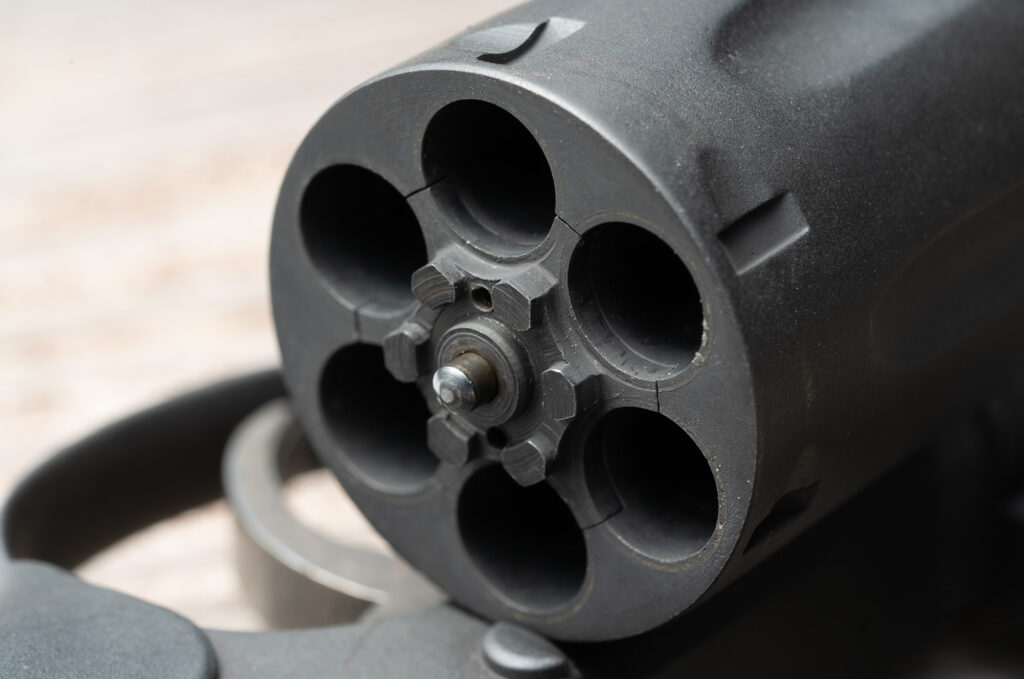
The current version, made since 2012, is 10-14. It remains the most imitated revolver ever, with clones and knockoffs made worldwide. Very few of the knocksoffs came even closer to the tight cylinder gap, smooth trigger, or consistent accuracy of the original. Smith & Wesson based most of its designs made since 1899 on this layout, making smaller and larger frames in various calibers, sometimes replacing leaf mainspring with coil spring, sometimes with round butt instead of square butt, sometimes stainless, sometimes with adjustable sights…but always a recognizable S&W form and design.
Why It Caught On
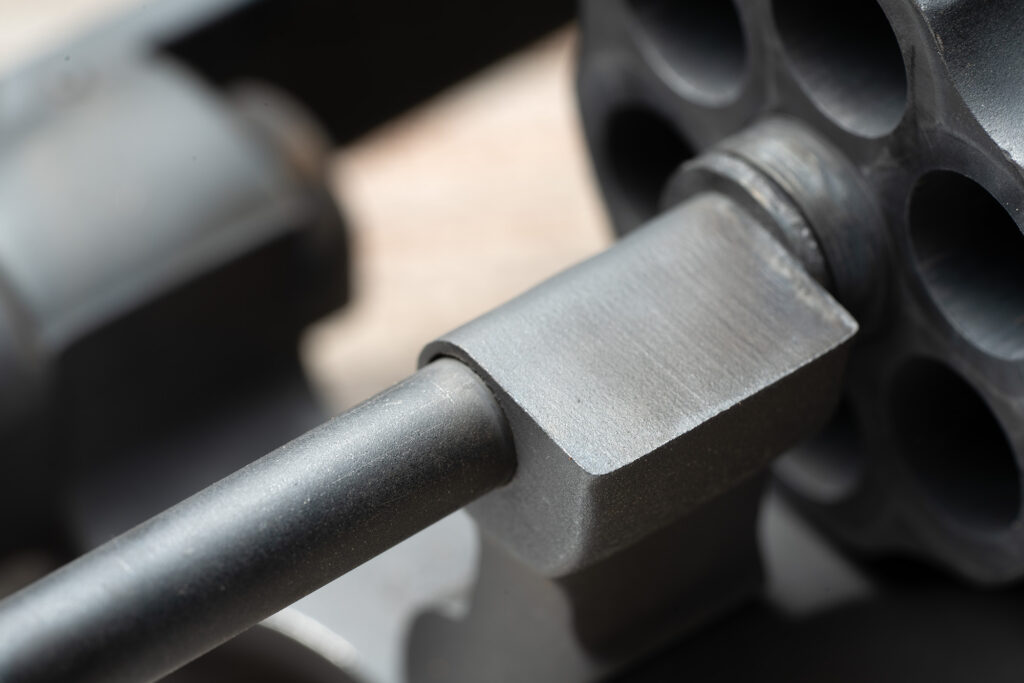
What made this gun become such a hit with the public? A nice balance of weight, power, and recoil. Smooth double action and crisp single action. Well-regulated non-snag sights combined with quality barrels offered users suburb accuracy. Excellent timing and chamber alignment, aided with front and back locking lugs, plus a positive cylinder stop. Durability, including later revisions that enabled Model 10 to fire +P ammunition without detriment.
Testing the S&W Model 10 at the Range
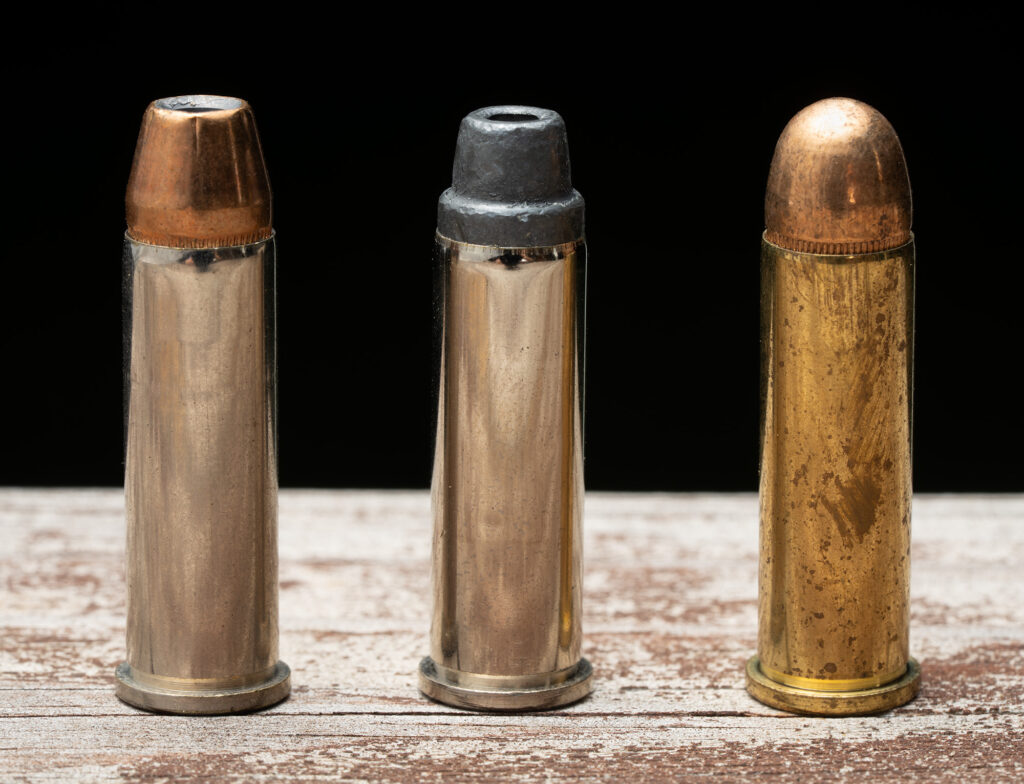
The sample revolver I used for testing was a tired-looking 10-2 made in 1961 and purchased in 2002 for $125. The wooden grips looked worm-eaten, and bluing was almost entirely worn out…but the gun shot extremely well. Crimson Trace textured rubber laser grips replaced the original wooden grips, and the metal was Cerakoted, but nothing else was done to this revolver.
How did it do 64 years later?
We test fired at 12 yards, with a variety of practice, target, and defense 38 special ammunition.
We got more consistent results using the laser than using iron sights. While fixed sights are more for fighting than for long distance accuracy, Smith & Wesson made versions with longer barrels and with finely adjustable sights, such as Model 15, basically a Model 10 with a 6 inch barrel and finely adjustable sights. All three loads gave similar results, limited more by the shooter’s technique than by mechanical accuracy.
The Results

The slower semi-wadcutter target load printed lower than the point of aim. That’s the lower group on the steel target image on the right. The faster FMJ hit slightly above it. Defensive JHPs shot to the point of aim.
This kind of accuracy guarantees a hit on a humanoid foe, and makes it probable even out to fifty yards. That is why S&W10 has remained popular with defensive and recreational shooters alike: we might take such accuracy for granted, but it was distinctly less common when this revolver was manufactured.
Smith & Wesson Model Prices
Retailing for $55 new (equivalent to about $600 today), the Model 10 has always been reasonably affordable. For a while, it was widely available as military and police surplus. It’s also pleasant to shoot: even the stouter .38 Special loads produce mild recoil.
Model 10 is so iconic today that it’s hard to remember how unusual its combination of features was at introduction. Smith & Wesson hit the sweet spot for size, power, and value. So much so that the Model 10 remains relevant today.
Target photos, all at 12 yards
• single groups: Hydrashok JHP
• two groups: (top) semi-wadcutters, (bottom) FMJ

